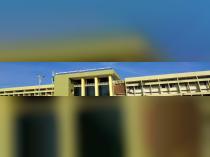What is the JEE Mains expected cutoff for admission to NIT Surathkal, Mangalore?
I belong to OBC category and also have home state quota.
-
1 Answer
-
The JEE Main 2024 cutoff ranks for admission to NIT Surathkal under the OBC-NCL Home State quota varied across different B.Tech programs. For instance, the closing rank for Computer Science and Engineering was 2422, while Information Technology closed at 3268. Other notable programs included Electronics and Communication Engineering at 4510, Electrical and Electronics Engineering at 6505, and Mechanical Engineering at 12856. These cutoffs reflect the competitive nature of admissions and can serve as a reference for future applicants.
Similar Questions for you
Candidates have to authenticate themselves during JAC Chandigarh registration using JEE Main application number, Name as per JEE Main admit card, and Date of birth as per JEE Main application.
During AIT Pune admission, candidates will have to fill JEE Main scores and admit card details. These details have to be submitted correctly, otherwise their admission will be cancelled.
If two or more candidates have same JEE Main score for AIT Pune admission, then authorities will follow tie breaking guidelines. This will be done to select an eligible candidate for the higher rank.
For AIT Pune admission, authorities will not accept any other entrance exam scores expect JEE Main. Candidates have to qualify JEE Main to be eligible for admissions into AIT Pune.
After the JEE Main result is out, candidates can:
- Register for JoSAA counselling for admission to NITs, IIITs and GFTIs.
- Register for state-level counselling like UPTAC, Bihar UGEAC, JAC Delhi, etc.
- If qualified for JEE Advanced, register for JEE Advanced exam at jeeadv.ac.in
Taking an Exam? Selecting a College?
Get authentic answers from experts, students and alumni that you won't find anywhere else
Sign Up on ShikshaOn Shiksha, get access to
- 66k Colleges
- 1.2k Exams
- 680k Reviews
- 1800k Answers

